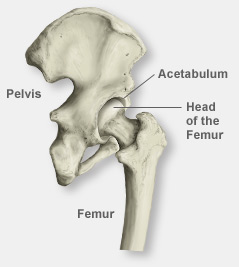Labral tears
What are soft tissue conditions?
Soft tissue conditions affect the ligaments, cartilage, tendons and synovium. One of the most common hip soft tissue problems is a labral tear.
What is a hip labral tear?
The socket of your hip joint (acetabulum) has a rim of cartilage lining the edge of the socket, called the labrum. This cartilage provides stability and cushioning for your hip joint, allowing the ball of your thighbone (femur) to move smoothly and painlessly in the socket. This can become torn, affecting the functioning of your hip.
What causes it?
Labral tears can be caused by an injury or repetitive movements that wear and weaken the tissue, for example twisting your leg and hip while they are supporting your bodyweight (e.g. whilst kicking a ball). Osteoarthritis can also cause the cartilage to degenerate and tear.
How does it feel?
Not all labral tears cause pain or affect the movement of your hip. However, in some cases, you will have an immediate pain on the front of your hip which may spread out over your hip and into your groin, and you may feel that the hip ‘catches’ or blocks when you move your knee up towards your chest.
Diagnosis
Your doctor will ask you about your medical history and will make a physical examination of your hip. He may also ask for a special type of MRI scan, where a liquid is injected into your arm before carrying out the scan, to create more contrast between the different tissues on the MR images.
Treatment – conservative
Your doctor may prescribe physiotherapy exercises to improve your hip muscle strength, stability and range of movement, cortisone injections into the hip joint to reduce inflammation and pain, or pain relieving medication.
Treatment – surgical
If the pain does not improve with conservative treatments, your doctor may recommend the following surgical treatment:
Arthroscopic Debridement: your surgeon will make two 4-5mm incisions through which he will insert a fibre-optic camera and the surgical instruments he needs to use. He will remove the torn piece of labrum and cut any loose filaments. If necessary, he will repair the tear with a suture. Each incision will then be closed with 2 stitches.
Rehabilitation after surgery
Depending on your recovery, you may be kept in hospital overnight. You will be given crutches to help you walk for the first 2 weeks, gradually putting more weight on the operated leg. For the first 4 days should put no wait at all on the operated leg. You will have to do physiotherapy exercises for about a month – initially to stop your muscles wasting and to get your hip moving again, and then as you recover, to build up your muscle strength and stability.
